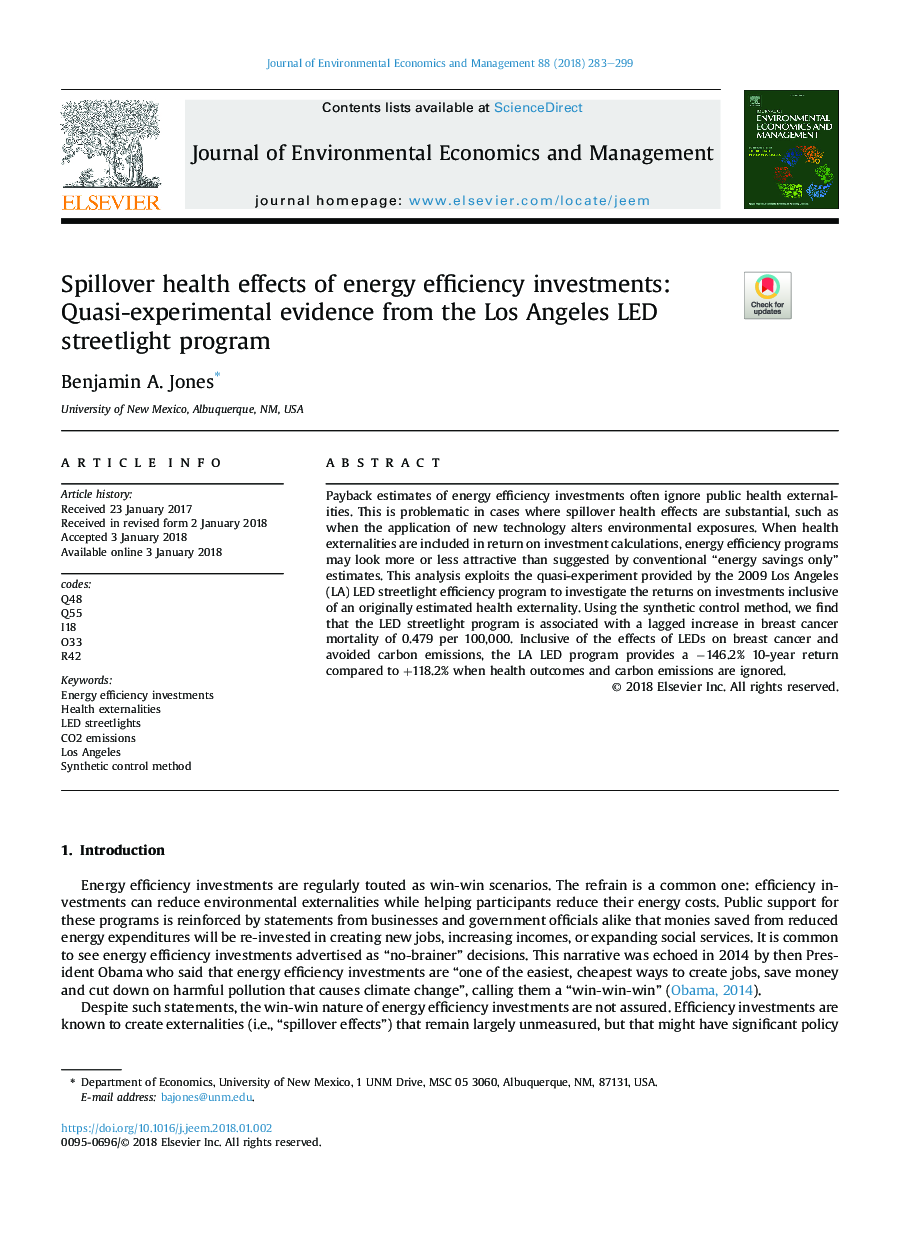| Article ID | Journal | Published Year | Pages | File Type |
|---|---|---|---|---|
| 7361375 | Journal of Environmental Economics and Management | 2018 | 17 Pages |
Abstract
Payback estimates of energy efficiency investments often ignore public health externalities. This is problematic in cases where spillover health effects are substantial, such as when the application of new technology alters environmental exposures. When health externalities are included in return on investment calculations, energy efficiency programs may look more or less attractive than suggested by conventional “energy savings only” estimates. This analysis exploits the quasi-experiment provided by the 2009 Los Angeles (LA) LED streetlight efficiency program to investigate the returns on investments inclusive of an originally estimated health externality. Using the synthetic control method, we find that the LED streetlight program is associated with a lagged increase in breast cancer mortality of 0.479 per 100,000. Inclusive of the effects of LEDs on breast cancer and avoided carbon emissions, the LA LED program provides a â146.2% 10-year return compared to +118.2% when health outcomes and carbon emissions are ignored.
Keywords
Related Topics
Social Sciences and Humanities
Economics, Econometrics and Finance
Economics and Econometrics
Authors
Benjamin A. Jones,
